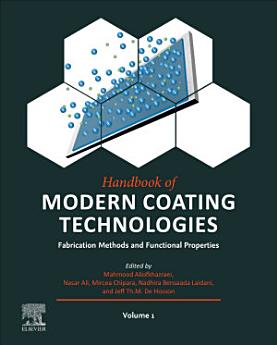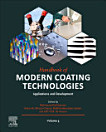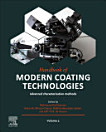Handbook of Modern Coating Technologies: Fabrication Methods and Functional Properties
About this ebook
About the author
Mahmood Aliofkhazraei is assistant professor in the department of materials science at the Tarbiat Modares University, where he also earned his master's degree and Ph.D. in corrosion and protection of materials. Dr. Aliofkhazraei has authored over 60 scientific publications on nanostructured coatings and thin films and has received numerous scientific awards, such as Khwarizmi award. He was selected among the 10 top best nanotechnologists in his country.
Nasar Ali’s research interests are focused on different coating materials, such as carbon and deposition methods (e.g. CVD, PVD), plasma assisted treatments and nanomaterials. Dr. Nasar Ali has published extensively with over 120 research publications in the field. Dr Ali serves on the editorial board of several nanotechnology related journals, such as Journal of Nanoscience and Nanotechnology, Journal of Nano Research etc. Furthermore, Dr Ali chairs some high profile international conferences such as NANOSMAT and MPA.
Mircea Chipara is Assistant Professor in the Department of Physics and Geology. The research of Dr. Chipara is focused on materials obtained by dispersing nanometer - sized particles with different physical properties (mechanical, optical, thermal, electrical, or magnetic) within polymeric matrices (nanocomposites). Such materials may exhibit multifunctional properties and may present smart capabilities. Due to their low weight and outstanding physical properties, nanocomposites have potential applications as space materials. The research of Dr. Chipara also includes a thorough investigation of the fundamental mechanisms and processes responsible for the degradation of polymers and polymer – based nanocomposites.
Nadhira Laidani is a Senior Scientist and Research Unit leader at the Center for Materials and Microsystems of FBK, Trento, Italy. She received her diploma of “Engineer in Petrochemistry from the National Institute of Hydrocarbons and Chemistry (INHC) of Algiers, Algeria, and her Ph.D degree in Applied Chemistry from P.& M. Curie University, Paris, France. She joined FBK (former ITC) in 1991 to conduct her research activity in thin film deposition and characterization, plasma surface treatment and plasma chemistry.
Professor Jeff Th.M. DeHosson (born 1950) holds a PhD in Physics of the Groningen University (with highest distinction, thesis supervisor Andre Wegener Sleeswijk) and after his postdoctoral years in USA (Northwestern Un. and UCBerkeley) was appointed in 1977 by the Crown to full Professor Applied Physics. His research focuses on the structure-property relationship in structural and functional nanostructured materials, in which ultra-high resolution transmission electron microscopy and surface modification techniques are key issues. He is elected member of the Royal Netherlands Academy of Sciences (division physics), Royal Holland Society for Sciences, editor of 3 international journals, including Scripta Materialia, member of editorial board of 12 journals and elected Fellow of various foreign scientific societies, including TMS and ASM-International. He holds Honorary professorships of Tsinghua Un -Beijing, UST-Beijing and Nelson Mandela Metropolitan Un PortElisabeth –SA. He received a number of international awards, including the Eminent Scientist Medal Wessex-Great Brittain/Un. of Southampton, the prestigious European Materials God Medal in 2005 and NanoSmat prize 2009. He published more than 800 articles, including 77 papers in Acta Materialia and supervised up to 2011 in total 69 PhD theses and 316 master students.






